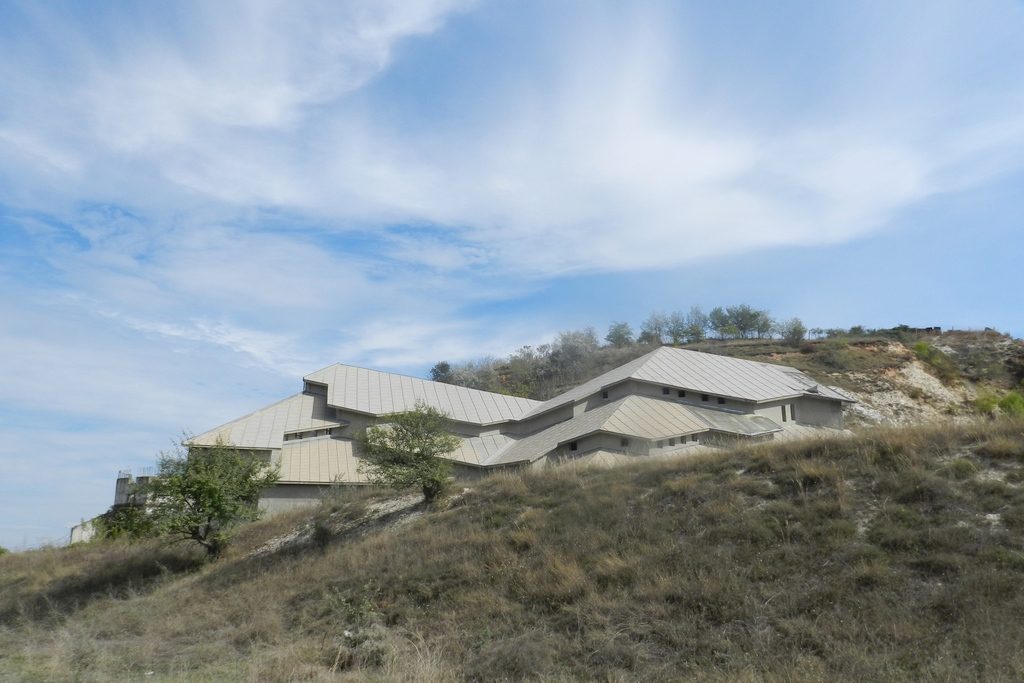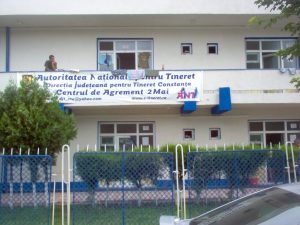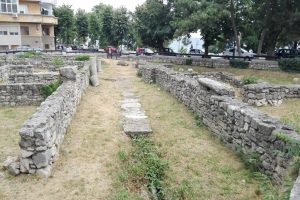

The Rupestral Ensemble is made of rooms and galleries, being carved in a chalky heal situated near the career of chalk extraction from Basarabi. It has been discovered on the 11th of June 1957, following some works of expansion of the areas of chalk exploitation.
The B1 church has the entrance carved in the abrupt wall, at a considerable distance towards the level of limestone of the basin in front of it. The only possibility of getting to it is the board platform especially arranged for this purpose. The church is oriented with the altar at East, and the entrance is made through the Northern side of the narthex. There aren’t windows to the exterior. There are also kept: Maltese crosses, simple, in alto-relievo, circle-wise, the biggest part being centralized in the narthex, of both sides of the entrance in the nave, a drawing formed of two squares, one included in the other one, with three runic graphites in the interior. On the date of the discovery, on the Southern wall of the narthex, there were also kept diverse animal drawings (horses and bunnies), Cyrillic graving and Cyrillic mixed with runic graphite, all of them disappeared because of the exfoliation of the wall.
The B2 church is situated at the superior level of the massif. It also has a three-compartment structure: altar, nave and narthex, with the altar oriented to South – West – East. It is 4 meters long and 2, 20 meters breadth wise. There are also kept drawings only on the walls of the altar and of the nave; the narthex’s walls weren’t kept. These drawings represent horses, horses and horsemen, all of them sketched of right lines and without volumes, as well as morris. There aren’t inscriptions. At the date of the discovery, there were also kept chalk blocks and on the other walls discovered in the narthex, a few crosses and Slave inscriptions.
The B3 church has the altar carved in the semi-circular shape, with the arch in the shape of apse; in its pavement there are carved three rectangular carvings, and in the ax there is kept an impost, probably the Holly Table. In the church’s aisle, there are kept diverse types of crosses (simple, pointed and lobed; as well as a Maltese cross framed in a square), the so-called stylization of a bull’s head, an armed horseman with a dart or an arch bow, horses and other animals, diverse geometrical themes (among them, there were also types of swastikas, pentagrams), a boot or a foot, a styled and carved aquatic bird in alto-relievo, as well as numerous inscriptions in runic graphite, with a variable length.
The three churches communicate by some galleries: the church B4, situated at the lowest altitude of the entire complex, communicates with chapel 2 of the church B3 by a rectangular breach in the ceiling.
It is supposed that the initial use of the complex Basarabi – Murfatlar was strongly connected to the existence of this stone wave, because many of the fragments kept of the cornice of the stone wave whose origin can be situated in the old career.
The age determination of the site has been made according to the indication of the inscription from the church’s nave B4 leat 6500, which means the year 992.





